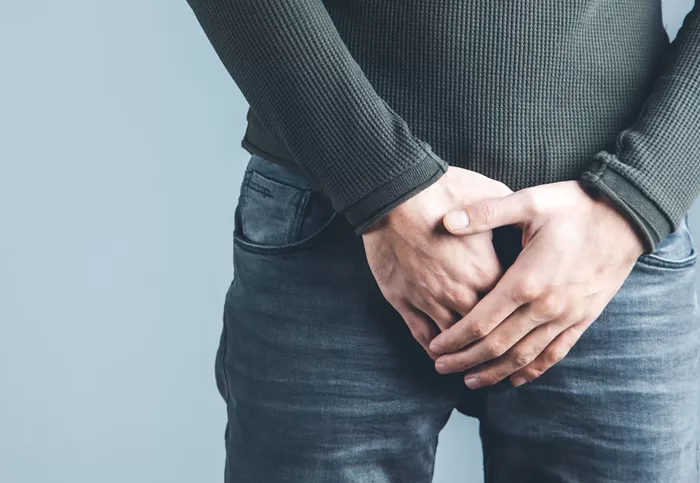Penile thrush, also known as candidiasis, is a fungal infection that affects men. It is caused by an overgrowth of the Candida fungus, leading to discomfort and irritation on the penis. This condition is more common in men with weakened immune systems, poor hygiene, or diabetes. Fortunately, there are effective treatments available. In this article, we’ll explore the best methods to treat penile thrush and provide helpful tips for prevention.
Top 7 Treatments for Penile Thrush
1. Antifungal Creams
One of the most common treatments for penile thrush is the use of antifungal creams. These creams contain active ingredients like clotrimazole, miconazole, or ketoconazole that work to kill the excess Candida fungus. You can apply the cream directly to the affected area once or twice a day as directed by your doctor.
These antifungal treatments are effective in relieving symptoms such as itching, redness, and irritation. It’s important to complete the full course of treatment to prevent recurrence.
2. Oral Antifungal Medication
In some cases, doctors may prescribe oral antifungal medications to treat penile thrush. These medications, such as fluconazole or itraconazole, work from within the body to target the Candida infection. Oral treatments may be recommended if the infection is severe or has not responded to topical creams.
It’s important to follow your doctor’s instructions when taking these medications. They may take a few days to show results, but they can be highly effective.
3. Probiotics
Taking probiotics can help restore the balance of good bacteria in the body and prevent the overgrowth of Candida. Probiotics, found in foods like yogurt and supplements, introduce beneficial bacteria that can fight off fungal infections. Including probiotics in your daily diet may support the healing process and reduce the likelihood of future infections.
For men with recurrent penile thrush, probiotics may be particularly helpful in maintaining a healthy balance of bacteria and yeast.
4. Good Hygiene Practices
Maintaining proper hygiene is crucial when dealing with penile thrush. Wash the genital area daily with warm water and mild soap. Avoid using harsh soaps or fragrances, as these can irritate the skin and make symptoms worse. Dry the area thoroughly after washing, as moisture can encourage fungal growth.
Additionally, wear loose-fitting, breathable underwear made of cotton to reduce sweat and moisture buildup, which can contribute to thrush development.
5. Avoiding Irritants
Certain substances can irritate the skin and make thrush symptoms worse. Avoid using scented lotions, soaps, and sprays, as these can disrupt the natural balance of bacteria and yeast. If you are using any products that could be irritating, consider switching to unscented alternatives to reduce the risk of flare-ups.
If you have recently used a new product that may have caused irritation, stop using it and observe whether the symptoms improve.
6. Managing Underlying Conditions
If you have an underlying health condition, such as diabetes or a weakened immune system, it’s essential to manage it properly. High blood sugar levels, for example, can create an environment that encourages the growth of Candida. Keeping your blood sugar levels within a healthy range can help reduce the risk of thrush.
If your immune system is compromised, take steps to strengthen your health with a balanced diet, regular exercise, and medical supervision. This will help prevent fungal infections from recurring.
7. Over-the-Counter Treatments
For mild cases of penile thrush, over-the-counter antifungal treatments may be effective. These products are often available as creams, ointments, or sprays and can be found at most pharmacies. However, it’s important to consult a healthcare professional before using any over-the-counter medication to ensure it’s appropriate for your condition.
Conclusion
Penile thrush can be a painful and uncomfortable condition, but it is treatable. The best treatments include antifungal creams, oral medications, probiotics, and maintaining good hygiene practices. By taking these steps, you can reduce the risk of recurrence and ensure a faster recovery. If symptoms persist or worsen, consult with your doctor for further evaluation and treatment options.
Frequently Asked Questions (FAQs) About Penile Thrush
1. What are the common symptoms of penile thrush?
Common symptoms include redness, itching, swelling, a white coating on the penis, and pain during urination or sexual activity. These symptoms may vary in severity.
2. Can penile thrush go away on its own?
While mild cases may improve without treatment, it is recommended to seek treatment for more effective relief and to prevent complications.
3. How can I prevent penile thrush?
To prevent penile thrush, practice good hygiene, wear breathable clothing, avoid irritants, and manage underlying health conditions like diabetes.
4. Can I still have sex if I have penile thrush?
It’s advised to avoid sexual activity until the infection has cleared up to prevent spreading the infection to a partner and to avoid worsening the symptoms.
Related articles:
- Thrush in Men: A Clear Explanation
- The 7 Best Treatment For Thrush For Men
- 6 Best Ways To Get Rid Of Thrush Males


